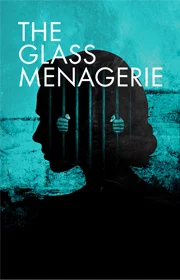
“The Glass Menagerie” is a poignant and introspective play by Tennessee Williams that delves into the lives of the Wingfield family. Set in St. Louis during the 1930s, the story revolves around Amanda Wingfield, a nostalgic and overbearing mother, and her two adult children, Tom and Laura. Amanda, desperate to secure a suitor for her fragile daughter Laura, enlists Tom’s help in finding a suitable match. Tom, torn between his familial duties and his dreams of escape, introduces Jim O’Connor as a potential suitor. As the characters’ hopes and aspirations collide, the play explores themes of memory, illusion, and the fragile nature of dreams. Rich in symbolism and emotion, “The Glass Menagerie” is a classic American drama that continues to captivate audiences with its timeless exploration of family dynamics and the pursuit of happiness.
Read The Glass Menagerie Flipbook:
Listen to The Glass Menagerie Audiobook:
Title: The Glass Menagerie
Author: Tennessee Williams
Genre: Drama
Setting: St. Louis during the 1930s
Main Characters:
• Amanda Wingfield: The overbearing and nostalgic mother
• Tom Wingfield: The narrator and son, who dreams of escape
• Laura Wingfield: Fragile and shy daughter with a fondness for glass animals
• Jim O’Connor: Gentleman caller and potential suitor for Laura
Plot Summary:
• The play revolves around the Wingfield family’s struggles and dreams.
• Amanda, a Southern belle from a bygone era, is determined to find a suitor for her daughter Laura.
• Tom, torn between familial responsibility and personal aspirations, plans to leave home.
• Laura is emotionally fragile, finding solace in her collection of glass figurines.
• The family’s dynamics unravel when Jim, a potential suitor, enters their lives.
Themes:
• The illusion of memory and the past
• The consequences of dreams and escapism
• The fragility of human connections
• The power dynamics within a family
Symbolism:
• The glass menagerie represents fragility and the fleeting nature of dreams.
• The fire escape is a symbol of potential escape and also entrapment.
• The absent father symbolizes abandonment and the family’s fractured past.
Significance:
• “The Glass Menagerie” is a classic American play that explores universal themes of family, dreams, and disillusionment.
• It’s often considered a semi-autobiographical work, reflecting aspects of Tennessee Williams’ own life.
• The play’s innovative use of symbolism and expressionist techniques has contributed to its lasting impact in American theater.
Autobiographical Elements: The play contains autobiographical elements, with Tom Wingfield serving as a reflection of Tennessee Williams himself.
Title Significance: The title, “The Glass Menagerie,” refers to Laura’s collection of delicate glass animals, symbolizing fragility and a world of illusion.
Expressionist Techniques: Williams employed expressionist techniques, such as the use of a narrator (Tom) and a non-linear narrative, to convey the characters’ inner thoughts and emotions.
Original Title: The play was originally titled “The Gentleman Caller,” emphasizing the importance of Jim O’Connor’s character.
Tennessee Williams’ Favorite: “The Glass Menagerie” was one of Tennessee Williams’ favorite works among his plays.
Broadway Success: The play achieved Broadway success, running for 563 performances during its initial production in 1945.
Film Adaptations: “The Glass Menagerie” has been adapted into several films, including a 1950 version directed by Irving Rapper and a 1987 version directed by Paul Newman.
Memory Play Concept: Williams described the play as a “memory play,” indicating that it reflects his own recollections and experiences.
Character Names: The names of the Wingfield family members hold significance; “Wingfield” suggests a family with unattainable dreams, and the name “Laura” means “laurel” or victory.
Influence on American Theater: “The Glass Menagerie” is considered a pioneering work in American theater, influencing subsequent playwrights and becoming a staple in drama education.